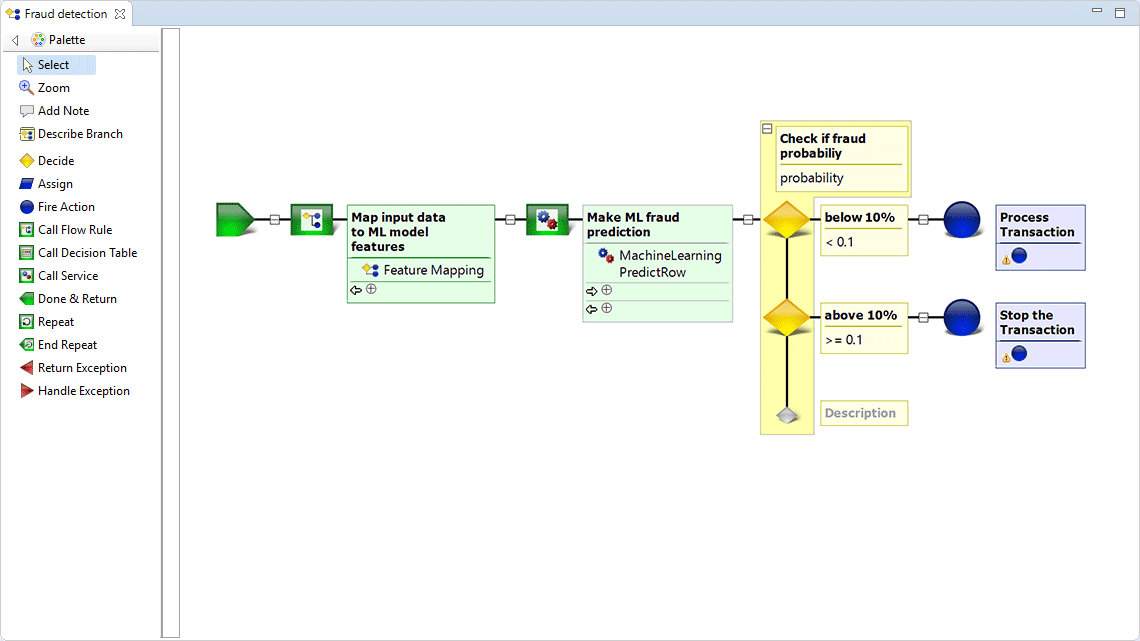How does a Decision Management Software work?
To make automated decisions, I need to know the rules on which the decision should be based. That’s why many decision-making systems are fundamentally rules-based. Humans work in exactly the same way: they analyze the facts, draw conclusions and decide on one of the options open to them. The decision-making mechanism can be thought of as a collection of tests in an “if-then” format, within the context of a process that defines the sequence of the tests.
The whole system defines any complex end-to-end decision-making process in a very systematic and understandable way. Some systems show the rules and the sequence of events in graphical form, some use rules in pure text form, and some only use decision tables. We find the graphical representation of processes, but also decision tables, i.e. a mix of all these options, to be the most useful.
The range of possible decisions are generated taking into account numerous rules and then – if there are several options – the second step is to look for the optimal decision. These optimizations are a secondary approach used within decision-making systems, in addition to the fundamental implementation of rules. If there are several options, one looks for the decision that generates the lowest possible costs, or that delivers the best result for the customer.





